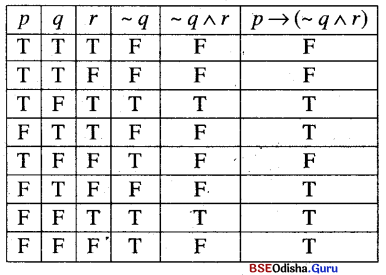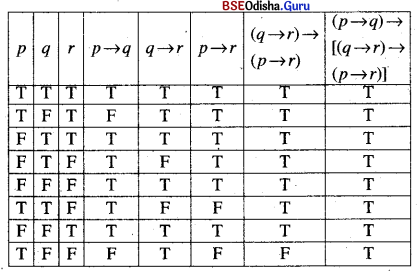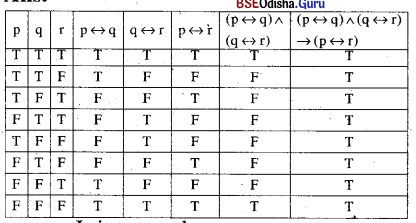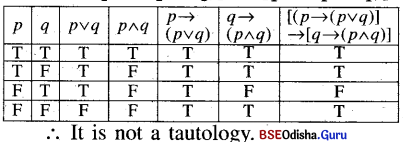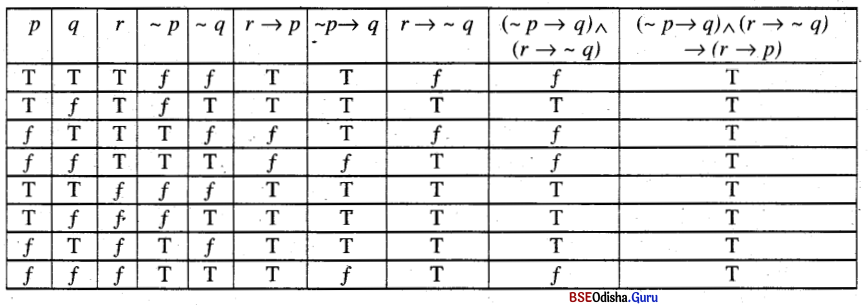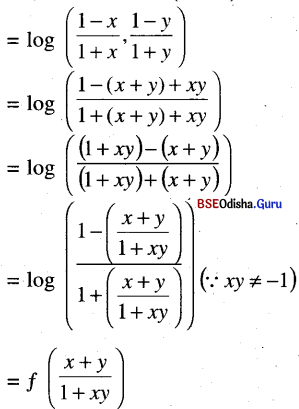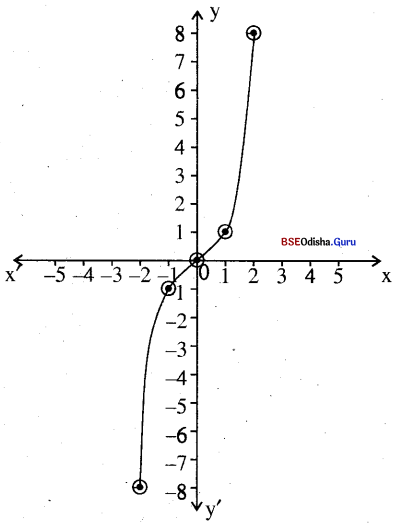Odisha State Board CHSE Odisha Class 11 Political Science Solutions Unit 4 Constitution at Work-I Long Answer Questions Part-1.
CHSE Odisha 11th Class Political Science Unit 4 Constitution at Work-I Long Answer Questions Part-1
Long Questions With Answers
Question 1.
Describe the importance of election in a democracy.
(Or)
Examine the role and significance of elections in a democratic country.
Answer:
An independent and efficient election system is essential for the success of democracy. It is through election people exercise their-sovereign power and decide the future of government the electoral process determines the future of a country. Free and fair elections elect competent representatives who can take the nation forward. Defective electoral machinery may invite the downfall of democracy.
Importance of Elections :
Election gives an opportunity to the votes to serve the nation. The voters discharge their duty by exercising voting rights and they elect those representatives who can change government policies and programs. This election helps in organizing public opinion. It is through an election that parties capture ruling power. Through elections, people get an opportunity either to support or oppose, the government.
It offers an opportunity to the votes to dethrone a ruling party out of office peacefully. Thus, an ideal electoral system strengthens the nation-building process. Election brings political stability, economic progress, and social integrity. It brings the ruler’s arid rule closer. The representatives are convinced about the problems facing the people. Election develops public trust on the government and defends the interests of citizens.
In order to win in elections the representatives do everything to satisfy the voters. Participation of voters in the electoral process promotes their political consciousness and they come to realize problems facing the state and other contemporary crises. The election also enhances the rate of political participation. During elections in a democracy a large number of people become active participants they either contest for political office or cry on a campaign for candidates or exercise, voting right.
Thus, the election as a whole makes people politically conscious and responsible. It makes citizens active and develops in them a spirit of service and sacrifice- The more the rate of participation the more success for the political system. It makes people repose their faith on the democratic process.
![]()
Question 2.
Narrate the Challenges to free and fair elections in India.
(Or)
Describe the deficiencies facing the Indian election System.
(Or)
Examine the problems facing the Indian electoral process.
Answer:
The new constitution of India has set up an independent and impartial election commission under Art. 324 of the constitution. The commission was set up in 1950 and the first general election was held in 1952. Since then 15 general elections have been conducted successfully under, the guidance and supervision of the election commission The Commission during the last 66 years has proved its efficiency, impartiality, and fairness. But still, the same obstacles are there which affect the integrity of the system.
These challenges and issues need to be discussed below. Challenges or threats to Indian Election System :
Use of Black money:
Election in India has become too costly because most of the political parties and candidates are making use of black money to win o the voters. The situation has become so acute that no ordinary citizen can venture to contest in ckcPwTha money power has affected the success of democracy.
Violence and muscle power :
The second major challenge is the use of muscle power and electoral violence to win elections. Most of the political parties today do not hesitate to give tickets to mafia dons and local goons to contest for the party. All moral ‘slogans of pacifying politics. Mabon, the World safe for women and children are more election slogans.
But no party sincerely contests election on moral grounds. The influx of criminals and anti-socials has increased so much that the election commission has come forward with proposals not to give party tickets to persons having criminal backgrounds.
Caste, Religion, Communal and Regional feelings:
Political parties in India are either based on caste religion community or regional feelings or extend favor, to such narrow feelings to win elections. Parties in the name of 3yizJjng elections create discord and disintegration within the state. The current problems j.tsanj out in k4be4 University ¡NU and NIT in Janimu and Kashmir and bright examples of Political parties encouraging divisive politics. This is not a good sign for the future of Indian democracy.
Defects in the electoral process:
Free and fair election in India is affected badly due to rigging and booth Capturing in various pooling stations. Despite police protection, such practices occur regularly putting a question – mark on the efficiency of the Election Commission.
Abuse of power by the ruling party :
During elections the party in power to center and states tend to abuse power for their political galaxy This poses a challenge to the fairness of the election commission Besides, political parties in India try to win over voters by influencing the poor, illiterate, and women voters So in order to increase the efficiency of election commission all these issues must be resolved by legal and other means.
Question 3.
Define universal suffrage and discuss its merits and demerits.
Answer:
Universal suffrage is a basis for the grant of voting right. When voting right is extended to all adults irrespective of their caste, religion, sex, discrimination, and educational or property qualifications it is called universal suffrage. It is found today in almost every democracy. However, it never gives voting rights to lunatics criminals, aliens, and others.
Merits:
The merits of universal suffrage may be discussed below:
Universal suffrage is in tune with the tune meaning of democracy. It believes in the principle of one man one vote. Universal suffrage establishes political equality. It demands that the right to vote should be equally distributed among all. It is not right to exclude some class or group from exercising franchise on the ground that they are poor, illiterate, or weaker.
The end of the state is common welfare. It is the common people that should determine the content of welfare, Because what touches all should also be decided by all. If one class is given the power to rule then it will always one class given the power to rule then it will always define general good in terms of its own. So if the universal voting right is given then all can have a share in the government.
It enables the minorities to protect their rights by electing their representatives for the national legislature; their feelings are voiced and their grievances are explained on the floor of chambers of parliament. Adult suffrage adds to the dignity and a sense of responsibility and political and civic education. A vote will give them an opportunity to understand the politics of the country and compute the political problems.
Universal franchise helps in bringing national units. and solidarity. Adult suffrage is the means through which people are bound together into a whole
The government as is backed by the majority feels strong which makes the administration stronger.
Demerits:
Universal suffrage is condemned for the following reason by Sidgwick, Mill, Maine, and others.
Universal adult suffrage may impede the scientific progress of the nation. Because the general people cannot make the best choice of candidate and those who shall be elected will be conservative enough to stand in the way of the progress and prosperity of the nation. Sir Henry Maine giving the argument said that universal suffrage would be in vogue in the UK during the scientific inventions and discoveries England could not have advanced so far.
He said universal suffrage could have prohibited the spinning jenny and the power loom. The right to vote for the uneducated ones is meaningless. Because the masses do not have the capacity to understand political problems and they can not elect the right type of representatives. So it should be given to those having the knowledge to make the best use of it. Universal voting right it is hoped, may lead to the loss of individual liberty, order, and civilization.
J.S. Mill argued for education and property qualification of votes. He said, education would make them conscious and property would make them responsible Mill said, no taxation without representation. That means those who do not pay taxes to the state should not vote taxes if they are given the voting right then public property and funds are likely to be spent lavishly.
If all are given the right to vote, then they shall be exploited by selfish individuals and political parties. They will be motivated by emotion and passion and it will be suicidal for democracy. The universal franchise may lead to the rule of ignorance. As the majority are illiterate they will represent an ignorant fellow and the government would be of the ignorant.
An audit franchise will lead to political corruption. Because the poor and the ignorant ones will sell their favor at the cost of tea or meal.
But, in spite of the drawbacks, this has been the order of the day. And ordinary people in poor underdeveloped countries have justified themselves as judicious voters and they have contributed to the success of democracy.
![]()
Question 4.
Give your arguments against women’s suffrage.
(Or)
What Is women’s suffrage? Discuss its merits
and demerits.
Answer:
When voting right is granted to all adult women irrespective of any discrimination, it is called women surface, Generally, it was a feeling with the men that women as are weaker to men in physical capacity they should not be given the right to vote. But gradually, women became educated, and they no more remained bound within the four walls, they entered into public service and at present being treated as equals.
Thus, the political emancipation of women was achieved in the first quarter of the 20th century in England and USA and gradually it spread to other states. The women in England got the right to vote in 1918, those above 30 years of age, but in 1928 the age limit was reduced. In USA voting right was conferred upon women in 1920, in France in 1946, and in Switzerland in 1970. However, scholars differ as to the contention about whether women’s franchise is just or not.
Arment of Favour :
First of all, it is argued that women should be given the right to vote to exercise their civil rights. If they will be denied the right to vote then they could not be good citizens and cannot be treated at poor as men. So to protect them from men’s subjugation voting right is necessary. As women today are equal to men in every respect, they are joining the armed forces, and police, they are intelligent and clever, and it is illegal to deny them voting right.
The right to vote does not require physical strength but moral and mental fitness to decide whether an individual is capable or not so it is wrong to deprive women of voting right on the ground of their physical weakness. The right to vote for women will enable them to defend themselves and their civil rights. Voting right for women is useful for them as it will save them from the exploitation of men. Women in politics will definitely purify the system. Corruption, favoritism, and illegal activities will be reduced.
Demerits :
The drawbacks of women’s suffrage are as fiction:
Women’s suffrage disturbs the peace of family life. Women are homemakers, if they will join politics then their household activitie&wiil be neglected. Women’s suffrage will also deprive children of their care and protection. If women join politics then their feminine qualities like tolerance, simplicity, love, and affection will give way to rude behavior, and stress. It will completely disturb the trust and relationship between husband – wife.
Women always remain dependent on men for most of their necessities so if they join politics what can they do for others. Women are conservative and emotional. So they will not handle the stress and strains of a political leader throughout the year. However, women’s suffrage has been in tune with democracy. As they constitute almost half of the population it will be an injustice to deny voting rights to adult women.
Question 5.
What is proportional representation? Examine its merits and demerits.
Answer:
Proportional representation is a form of minority representation. In this system, all groups, factions, and sections of the population are given representation in proportion to the votes secured by them during the election. It is a model of the indirect election that seeks to rectify the defects of the majority vote system.
Proportional representation can be of two types:
- The hare system or single transferable vote system.
- the list system.
The Hare System (single transferable vote system):
This model was developed in 1857 by Thomas Hare of England and it is known as the Hare System of representation. This is useful only for the multi-member constituency where each candidate needs to secure a fixed quota of votes. In this system, each voter has only one vote but exercises this vote in order of preference. The number of preferences is equal to the number of candidates.
Way:-The Quota is determined in the following way:
\(\text { Quota }=\frac{\text { Total number of valid votes }}{\text { Number of state }+1}+1\)At the time of counting the 1st preference votes are counted first and those who reach the quota are declared elected. If some seats remain vacant then the 2nd choice of those voters who voted for successful candidates are transferred to others. Then counting starts and those who reach the quota are declared elected. Due to this transfer of preferences, it is called a single transferable vote system. The President and vice President arid Rajya Sabha members are elected in this method.
(b) List system:
The list system is useful only for multi-member constituencies. Here every party has to prepare a list Of candidates to be elected. The voters vote for the party without knowing the candidates. After the election seats are divided among the parties in proportion to votes secured by each party. For example, if the total number of valid votes is a hundred and the number of seats is 5 then the quota is \(\frac{100}{5}=20\).
If a party has secured forty votes it will get two seats. If all the seats are not filled up then the party that has the largest fractional surplus gets the remaining seat. This list system is followed in US Presidential elections in Belgium, France, Sweden, and Switzerland.
Merits :
In this system, the defects of the single-member constituency model is rectified. It makes the legislature a true mirror of the nation because all groups and parties are duly represented. It provides an opportunity to minorities to represent in the legislature. In this system, no vote is wasted. It develops a civil interest in the people.
Demerits :
Proportional representation encourages: smaller parties and thus leads to political stability. No party secures a majority in the legislature giving way to coalition ministries. Here the voters elect candidates, whom they do not know. It encourages factionalism and disintegration. It is not suitable for federations. The system of proportional representation enhances the power of party leaders.
They prepare a list of candidates, so the representatives are more loyal to the party bosses than to voters. It breeds corruption. The vested interests can easily control party high commands. In proportional representation, it is not possible to hold by-elections as it requires a multi-member constituency. It encourages divisive forces in society and contributes to the aggravation of successful sectionalism.
![]()
Question 6.
What is geographical or territorial representation? Discuss its merits and demerits.
Answer:
Territorial representation is otherwise known as geographic representation and it is found prevailing in most countries having representative governments. In this model, the whole country is divided into geographical areas or constituencies having approximately equal populations. From each constituency a single representative is elected by majority vote, The constituency may be single-member or multi-member, The territorial limits of the constituencies are fixed from time to time with the growth in population and voters.
Merits of Territorial Representation:
Territorial representation is simple and convenient. As the area of the constituency is limited it facilitates intimate contact between the voters and the representative. It is economical as much less amount is required for the restricted area. It ensures a stable majority in the legislature which is conducive to a strong and stable government.
Demerits:
The territorial representation is defective on the following grounds:
It narrows down the list of candidates available to the voter. In this method, no outsider can contest an election even if he or is experienced. Gerry’s meandering is the greatest defect of territorial representation. In this system boundary of the constituencies is manipulated by the ruling party for its advantage. It encourages parochialism in the representatives. They try to secure the local interests of their constituency and neglect national interests.
In this system professions and occupations are not represented. In this system a candidate requires a relative majority to win a seat, thus it leads to the permanent voicelessness of a perpetual minority.
Question 7.
What is functional representation? Examine its advantages and disadvantages.
(Or)
Give your views for and against functional representation.
Answer:
Functional representation is another type of minority representation which is a protest against territorial representation. Proportional representation represents only political minorities, hence, a functional representation that accords with the representation of all Occupation are- expected to be a better alternative to territorial representation.
Functional representation was advocated by Wallas, Webbs, Duguit and G.D.H. Cole, etc. According to them, the Parliament is elected by various professional vocational and functional groups like industry trading corporations, medical associations and lawyers associations, etc. This system was adopted by the Russian leaders after the Bolshevik Revolution.
Mussolini in Italy organized the Italian senate, on these lines. The German constitution of 1919 established an Economic council representing the special interests of labor, capital, and consumers. The Vidhan Parishads in Indian states are also organized on the basis of functional representation.
Advantages of Functional Representation:
The system of functional representation is advantageous on the following grounds:
In modem democracies, vocational groups play an important role so these groups should have representatives in the parliament. Most of the laws that parliament pass deal with industry, agriculture, trade, commerce, and other vocational interests. But these interests find no representation in parliament even though they are affected by the legislation. As the economic sector is playing an important role today functional representation should be adopted as the ideal basis of representation.
Disadvantages:
The system has been popular owing to its glaring detects as discussed below :
Functional representation is found to be inconsistent with national sovereignty. Esme says a legislative assembly elected on the basis of functional representation is expected to represent the interests of a particular group’s profession or interest but not of the nation. These groups within parliament fight for their sectional interests rather than adopt a national outlook.
If functional representation is followed, the then-the legislature shall turn into an area of conflict and every representative will blow his own trumpet and talk of his own group. It can serve no purpose. This system is based on unsound principles. One representative can not represent all shades or opinions. Laski says, how can a doctor talk of foreign policy since there is no medical view of foreign policy. Each representative shall be parochial in outlook and cannot serve the country at all.
There can be no adequate basis to provide adequate representation to various interests and vocations should the medical profession be placed on equal footing with the steel industry, agriculture, or otherwise. This system limits the choice of voters to professionals. Functional representation undermines the unity of the community.
Every voter is first of all a citizen of the country then he is a lawyer, a teacher or a farmer, but if his profession counts first then he will forget about the goal of the nation. On account of the following defects, functional representation is rarely followed. This system can only be supplemented with any other method.
![]()
Question 8.
What is direct Election? Discuss its merits and demerits.
Answer:
An election can be of two types. Direct and indirect election. In a direct election, the voters directly cast their votes in favor of the candidate. It is a simple process where the votes go to the pooling booth and press the button on the EVM against their candidate of choice. The candidate who secures the maximum vote is declared elected. Direct election is found in most of countries of the world today. The members of Lok Sabha and Vidhan Sabha in India, the members of the British House commons and US senate, and the House of Representatives are elected in this process.
Merits :
- In a direct elections, people participate in politics directly and become politically conscious.
- It establishes direct contact between the voters and the candidates. The representatives remain answerable to the people and work for their interests.
- It generates public opinion, interest, and initiative among voters.
- The voters remain more responsible.
Demerits :
The drawbacks of the indirect election are as follows:
- Direct election is not useful for poor, ignorant voters as they fail to choose proper candidates.
- It confuses voters as different parties talk differently to influence votes. Here parties divide voters on caste, religion, and communal lines to seek their favor.
- It tends to be influenced by falsehood & corruption parties go on condemning the character of opposition candidates. It pollutes the entire electoral atmosphere.
- Direct election is costly and more prone to violence. However, this is the best available option in a democracy.
Question 9.
What is an indirect election? Discuss its merits and demerits.
Answer:
The indirect election is a process where the voters do not directly elect the real representatives. It involves two elections. First, the voter elects an intermediary group and then this group elects the real representatives. The President and Vice President and the members of Rajya Sabha are elected in this method.
Merits :
The indirect election is peaceful for which more educated and learned persons participate in the process as candidates. In this method, the voters who vote for the real candidates are conscious, clever and literate so they can not be influenced by false propaganda or lured by money or muscle power. It is suitable for poor, backward, and underdeveloped countries. It is less expensive. It is suitable for electing top political offices.
Demerits :
The indirect election also suffers from the following defects.
The indirect election is less democratic as it never involves more people. In this process, no political awareness is created. It makes voters indolent and inactive. In this method, party decisions prevail over individual preferences. The voters do not have contact with the representatives. In this method, parties try to influence the group through money and power. So it is prone to corruption and bribery. However, this method has limited utility and can be used for the same posts.
![]()
Question 10.
Distinguish between direct and indirect elections.
Answer:
Elections in general can be direct or indirect. In the direct election, the voters participate directly and cast their votes in polling stations in favor of their liking; candidates. Those who secure the maximum votes in a constituency are declared elected. But, indirect election involves two elections. First people elect an intermediate body, which by the second election elects the real representatives.
Direct election establishes close contact between voters and representatives. But in an indirect election, no such contact can be established. Direct election promotes the political consciousness of voters and makes them responsible and conscious. But, the indirect election does not stimulate public interest. Direct election is suitable for educated and advanced countries, but the indirect election is useful for backward countries with ignorant and illiterate voters.
Direct election is expensive but indirect elections are less expensive. Direct election involves violence, corruption, booth capturing, rigging, and the use of illegal means to win elections. But in the indirect election, these things do not occur. In a direct election, the voters are free to make choices but in an indirect election, they have no choice but to act on party instructions. Direct election is more democratic than indirect elections. However, we find both practices in almost every state.
Question 11.
Discuss the electoral reforms which are yet to be introduced.
(Or)
Suggest reforms to rectify the Indian election system.
Answer:
The Indian election system is suffering from a member of defects, some of which are structural and others are operational. The election commission in concurrence with the union government has already introduced some reforms and some more are yet to be introduced. So, the proposed reforms should be enumerated below: Reforms suggested not introduced :
In order to reduce the vote-seat gap alternative systems must be followed like, the second ballot system or alternate vote system. To increase voter turnout during elections voting must be compulsory and voters must be encouraged to participate in voting. To eliminate the use of black money a poll fund should be created and donations to political parties must be open to all.
Special courts must be set up to speed up settling election disputes. Steps are taken to reduce the scope of defections. To enhance women’s representation, 33% reservation of seats for women must be introduced. Those violating the election code of conduct must be punished. Election campaigns should be monitored closely to keep it healthy. All these reforms will definitely improve the election system in India.
![]()
Question 12.
Discuss the Organisation of the Central Election Commission.
Answer:
For every democratic polity like India, a free and independent electoral machinery is indispensable. The constitution, therefore, provides for an independent Election Commission Under Art. 324 and incorporated several steps for keeping it free from political and executive influences.
Composition:
The constitution under Art. 324 (2) states that the Election Commission of India shall consist of a Chief Election Commissioner and such other commissioners as the president may from time to time determine.
Membership:
Initially, the election commission was a one-man commission and it was only after 1989 its membership increased to three. Besides the chief election commissioner, there are two election commissioners and all of them enjoy equal authority.
Mode of appointment and removal:
The chief election commissioner and other members of the election commission are appointed- by the president as per the rules framed by the parliament. The constitution was silent about the qualification of the members and their terms of office. They hold office at the pleasure of the president. However, once appointed the members of the election commission to continue in office till they attain the age of 65 years or complete 6 years in office, whichever is earlier
They can resign from office at any time or can be removed by the president only on grounds of ‘proved misbehavior and incapacity. The president can’t on his own remove any member unless a proposal to that effect is passed in both houses, of parliament by 2/3rds majority of members present and voting. Thus, the election commission acts as an independent and autonomous body. Which ensures free and fair elections.



